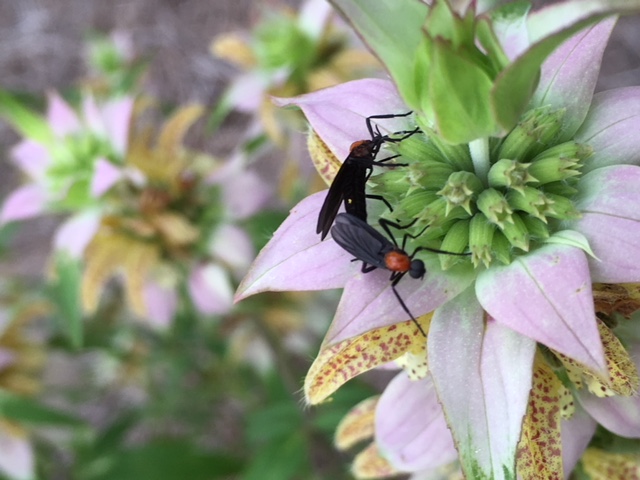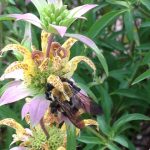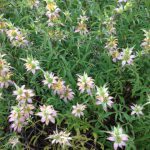
Dotted Horsemint Attracts More than Pollinators
In 2016, I wrote an article for Gardening in the Panhandle called “Attract Pollinators with Dotted Horsemint” introducing readers to this tough native plant that supports native pollinators. If you have flowers in your garden, you probably have pollinators and a whole lot of other insects but if you want a plant that lets you observe a really diverse palate of bugs dotted horsemint Monarda punctata.
When I find I have some downtime at home I have a habit of wandering the yard looking for interesting insects. Admittedly, I usually have my phone in hand hoping to get a great photo or video of my arthropod visitors, but it is a productive task, too. As strange as it may sound, I can count this hobby as part of my integrated pest management landscape maintenance strategy – scouting!
My favorite plant to visit on my scouting run is normally not afflicted with pests, but it hosts so many different insects it always gets a stop on my rounds. When dotted horsemint is in full flower it is visited by a lot more than pollinators. I’ve recorded daily visits from assassin bugs, ants, beetles, flies, dragonflies, spiders, thread-waisted wasps, honey bees, butterflies, and moths.
Here’s a photo album of frequent visitors to my dotted horsemint from this summer – enjoy!


